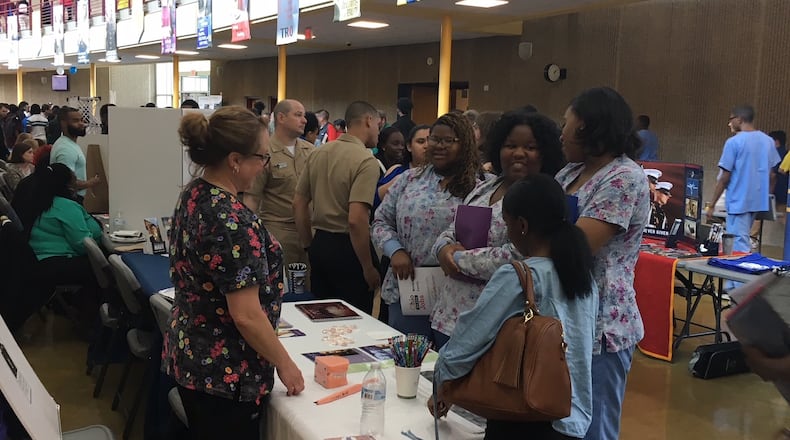That figure was at 74% for the high school Class of 2016 (enrolling by fall 2018), but it dropped to 71% the next year, and to 62% for the Class of 2018 (enrolling by fall 2020).
The COVID-19 pandemic may have affected the very end of the second year drop, but Learn to Earn CEO Kristina Scott said a major national trend was likely the No. 1 reason.
“As the economic recovery was happening … particularly in the latter half of the decade, you saw such tremendous demand for workers,” Scott said. “The economy was getting better and you saw more people go directly into the workforce for a job rather than delaying and getting a post-secondary credential.”
Scott said it’s understandable that many local residents, especially from lower-income families, go into the workforce to make money right away. But she urged young people to chase a career, not just a job, as Learn to Earn cites two key statistics:
· A Georgetown University study said bachelor’s degree holders earn $800,000 more over their lifetimes than those with just some college, and associate’s degree holders earn $200,000 more;
· Students who delay enrollment are 64% less likely than their “on-time” peers to complete a bachelor’s degree and 18% less likely to complete any college credential.
And Scott emphasized to families concerned about college affordability and career pathways that “post-secondary education” includes a wide variety of options.
“If you take College Credit Plus or Tech Prep classes, you can graduate (high school) with a certificate,” she said. “Then you can stack that into an associate’s degree that really sets you up for a career. And maybe eventually you want a bachelor’s degree, but you can really jump-start yourself in the job market.”
Edison State Community College in Piqua just took the extreme step of telling 2021 high school graduates in their area that they can take classes for free if they meet a few requirements.
Edison State President Doreen Larson said her school wanted “to remove any hesitation” for kids to go straight into college, mirroring Learn to Earn’s position on delaying education.
Learn to Earn has long described its “big goal” as helping Montgomery County reach a point where, by 2025, 60% of working-age adults have a college degree or other high-quality postsecondary credential.
According to data from the Lumina Foundation, the percentage with an associate degree or more climbed from 37.6 to 38.5 to 39.5 percent from 2015-17, with “up to 10%” more holding some type of workforce certificate. That would put the county just over 10% away from the goal.
But that degree number stuck at 39.9% for both 2018 and 2019. Scott said Learn to Earn is working with the Montgomery County Educational Service Center and local colleges “to really broaden people’s notion of what postsecondary education looks like,” including an effort to put a spotlight on skilled trades.
She said Montgomery County ESC Workforce Director Bryan Stewart worked with all of Montgomery County’s school districts to expose high school students to virtual career tours over Zoom during the pandemic.
“They did virtual tours with the construction crews at the Arcade and factory tours to see what manufacturing looks like in 2021,” Scott said. “A large number of students have been able to learn about many of these employers who require sub-bachelor’s degree credentials … easier than getting them all there on a field trip.”
Scott said she’s highly concerned about students from the high school classes of 2020 and 2021, with college applications and financial aid applications down. She said a key is making sure students and families know the wide range of options available.
“We really have an opportunity to connect students and families and adults in the workforce with the story that by continuing your education after high school, that you have so many more employment opportunities, make more money, and can do it affordably,” she said.
About the Author

